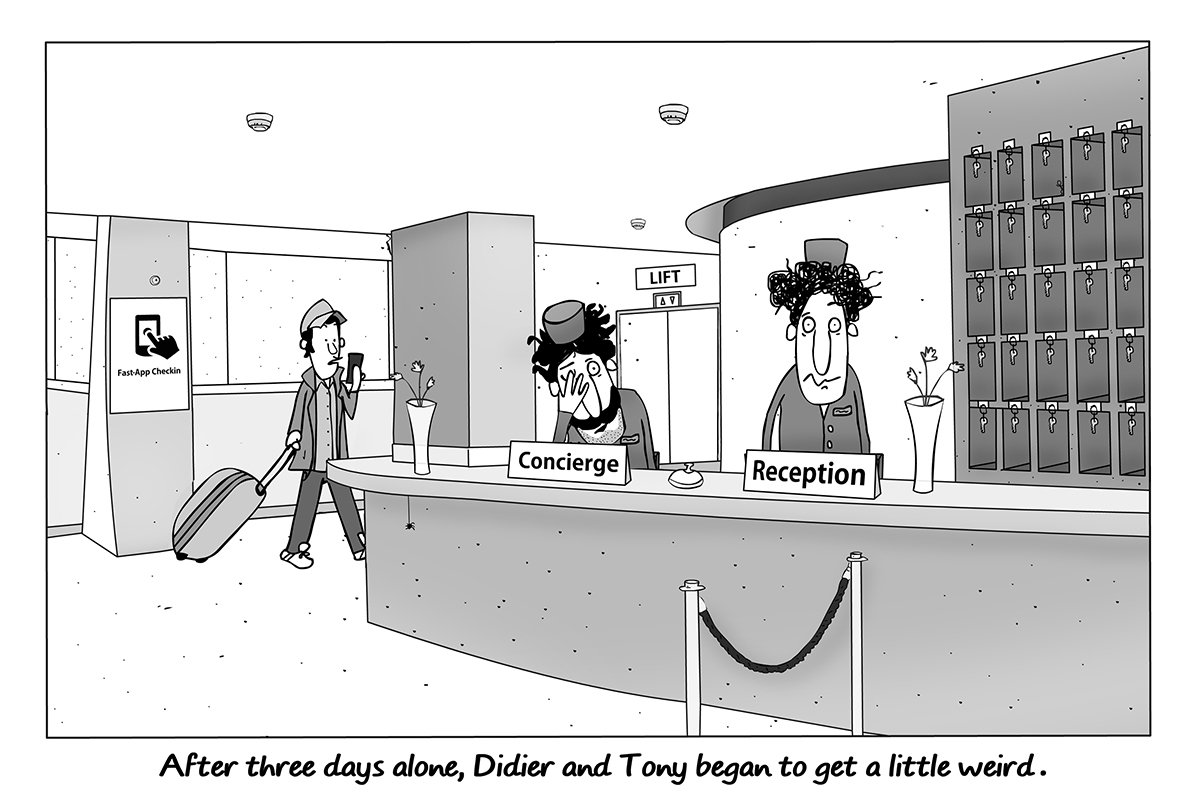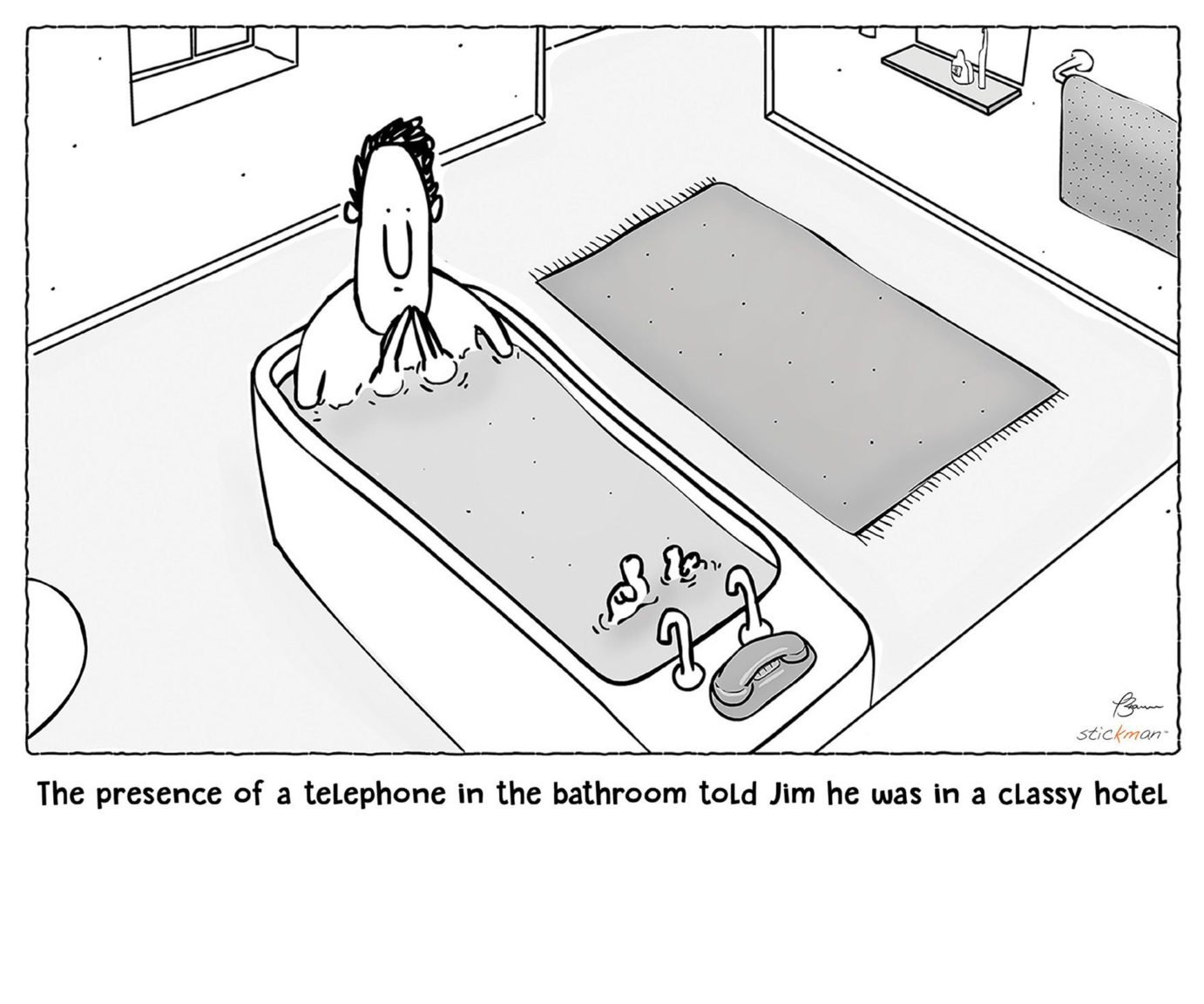According to one of several competing systems in the USA, where a fifth star can mean an additional 40% charge per night; in order to qualify, arriving guests must be met kerbside within sixty seconds and an empty coffee cup refilled in thirty! While all this sounds wonderful in theory, I for one believe there’s more to great service than the frequency in which someone peers into my cup. Boutique properties like Eichardt’s in New Zealand or The Henrietta in London – a hotel which packs more personality into its thirteen rooms than three Tyrion Lannister’s put together – offers a level of intimacy beyond anything available in a larger establishment, yet would fail to reach the required standard for a telephone near the toilet. Added to which the current system does not take into account, or ever has for that matter, the innovative or the unique. A hotel could tick all the boxes with a robe, daily newspaper and shoe polishing kit, but it does nothing to help attain that coveted fifth star.
 As founder of Dubai-based Stickman Tribe, Marcos Cain needs no introduction. A force to reckon with and a passionate spokesperson for hospitality and F&B design, Marcos has over twenty years’ creative experience spanning hotel, retail, residential and commercial projects.
As founder of Dubai-based Stickman Tribe, Marcos Cain needs no introduction. A force to reckon with and a passionate spokesperson for hospitality and F&B design, Marcos has over twenty years’ creative experience spanning hotel, retail, residential and commercial projects.
He’s personally spearheaded concepts all the way through to landmark venues across Asia, Australia and the Middle East – from award-winning boutique hotels to iconic builds like The Cook, The Meet, The Brew at the Kerry Hotel, Pudong, the ground-breaking Hotel Jen in Beijing and the Nurai Island Resort described by Newsweek as ‘the most luxurious project in the world’.
In the first delivery of a series of design conversations, Marcos questions the validity of the Five Star hospitality rating system and explores its relevance, especially within a local context.
Despite this complex mire of ambiguity, there are certain criteria that are generally accepted as prerequisites such as access to a concierge, a pool and gym, restaurants and bars, reliable WiFi and a well-stocked minibar; to name just a few. There must be at least one suite, an evening turndown service, personal care products in the bathrooms and a spacious, 24-hour reception – despite it being an area of the hotel as underutilized as Hilary Clinton’s firewall. In essence, however, it boils down to the concept of luxury! But luxury itself has now evolved, leaving some of these offerings viewed as staples (WiFi, a shower) and others essentially superfluous. In 1954, a phone in your room would have seemed wonderfully decadent; but today, practically everyone carries one in their pocket or on their wrist. But what about the design of a hotel? You could theoretically produce an Ikea box that ticks all of those criteria, but would it truly be Five Star? Would it represent a global definition of luxury?

Where then is the reward for the hotel that incorporates a bold, fresh design? Or reinvigorates its services to suit an ever-changing market? Are we in essence rewarding the cautious?
The sheer density of Five-Star properties gives these questions special relevance to the UAE – a region perpetually at the forefront of luxuries, continuing evolution. By creating the concept of Seven Star, and skipping six entirely, the Burj Al Arab highlighted the inadequacy of the existing system and got the world talking about whether it was doing anything sufficiently different to warrant such an aspiration – with a Rolls Royce fleet, Butlers on every floor and under-sea dining, it’s fair to say that they were! The Abu Dhabi Tourism and Culture authority, meanwhile, has taken unprecedented steps to set a modern expectation of Five Star. By surveying all the hotels in the region and consulting operators, designers, engineers and venue managers; they’ve established a detailed point system covering the whole spectrum of accommodation offerings. With a total of 900 points up for grabs, a Four-Star hotel must be in the 700-799 point range, whilst a Five Star must achieve no less than 800-900.
But whilst this is certainly a breath of fresh air, and a bold step in the right direction, it does not take into account something that transforms a hotel from a building to a treasured memory – character.
Break it down room-by-room, and the current system doesn’t seem any less dated. In the bedroom, there must be a compendium of services set on a dressing table, surrounded by two chairs – why not a bench or a daybed? Because the rules demand two chairs! Does this then somehow make a daybed less luxurious? These same rules require personal care products in the bathrooms but don’t specify which brands. Should it not at the very least be recognizably bespoke varieties? Thankfully the boundaries are getting pushed. I recently stayed at a hotel in Hong Kong that managed to evolve the anachronistic hotel telephone by providing a courtesy smartphone pre-loaded with numbers for local restaurants and services, and in a lovely touch, free calls to six countries. Why then is this an exception and not the very definition of a Five Star rule? What about children’s amenities? Something that has never been part of the accepted criteria. Alongside the extensive pillow menu, could there not be a selection of ‘please distract my children’ options?

How interesting would that be for designers to incorporate? An in-house labyrinth made of soft and fluffy things, perhaps? On a more practical scale we’ve had lots of fun designing pop-up tents in a host of themes; from fairy-tale castle to voyages into the unknown, to bring a sense of wonder to a child’s hotel room, and which come with a garnish of breathing room for stressed-out parents.
A Five-Star hotel must, of course, have restaurants and bars, but could we not at least specify exceptional and unique restaurants and bars? This would surely encourage the raising of a bar that’s rusted in place, it’s been unmoved for so long. There’s certainly a market for this. When designing The Cook, The Meat, The Brew in Pudong we were tasked with incorporating fresh, sustainable food into the very fabric of its DNA. Achieving this through an in-house coffee roastery, a micro-brewery, a walk-in wine room, even a luxury charcuterie deli; making smell a key element of arrival. But there still needs to be more! If you spend as much time in hotels as I do, you begin to look at 24-hour room service as the pinnacle of human achievement; but go back in time and kill the inventors of French onion soup and Caesar Salad, and you would cripple most hotel menus. Surely to embody the essence of modern Five Star it needs to be more than just cloche-covered plates on a squeaky trolley, no matter how quickly it arrives? Why not in-room dining with genuine farm to table authenticity as standard? InnAthens, with its gloriously sunlit atrium and twenty-two uniquely designed rooms, has allied itself with a bespoke local restaurant to serve as the All Day Dining restaurant. They subtly dodged the round-the-clock food service by offering a more personalized picnic box for guests, when required. Or perhaps, as in certain top London hotels, we abandon the menu altogether, replacing it with a single line, what would you like to eat? Throw in a mini-bar filled with bespoke local products and we’re finally getting somewhere.
At its heart, Five Star should demand a level of offering so far above the norm it leaves you disarmed quicker than a villain in a Jackie Chan movie! And whatever comes next will certainly have to offer three things – discovery, experience and difference, ideals the millennial generation in particular crave. But a better first question might be, who should decide what’s actually required? The answer must surely involve the guest. As the saying goes, the guest sees more in an hour than a host does in a year; and Australia has already made consumer response a factor in its classifications.

Yes, they are potentially more critical (customers that is not Australians, though there is perhaps a case for that as well), but they’re paying a Five-Star price; surely that gives them the right to make demands beyond the obvious or traditional. Perhaps, then those stars would earn the hotel the kudos it actually deserves.
As an industry, we pay a price for considering anything set in stone. By challenging and revolutionizing the existing conventions and making character an essential part of its successor, operators would be encouraged to be maverick; not just for the sake of it, but because it makes bold, operational sense – enticing customers through the boldness of vision. Designers meanwhile, traditionally the purveyors of change and innovation, would be encouraged to exercise the full scope and sweep of their imagination; projecting and stretching their creativity to the absolute limit, thinking beyond the past, not just catering to it.
That’s a philosophy we should all embrace.







